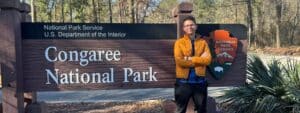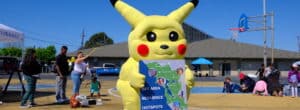This is it, folks. This Thursday, May 17, the Metropolitan Transportation Commission and Association of Bay Area Governments will adopt the final preferred scenario for Plan Bay Area, as well as the final One Bay Area grant program. After years of working on this plan, where have we landed?
The quick summary
On the whole, this is a great preferred scenario. It will provide more choices to current and future residents for types of neighborhoods to live in and transportation options for how to get around. It will protect our iconic natural lands and farms for our children and grandchildren.
And speaking quite personally, it will reward the lifestyle that I have come to love dearly. I love the neighborhood I live in now. The condo I live in is just right for my husband and me, since neither of us want to maintain a large house or a yard. We can walk downtown to restaurants, the drugstore, the grocery store, the library, and the dry cleaners. And Caltrain is just a few blocks away; I take the train north to work in San Francisco, Rafael takes it south to San Jose. Our location means the two of us can manage just fine with only one car, which can save a lot of money.
The Plan Bay Area preferred scenario will reward the many many Bay Area residents who have lifestyles like mine, but it also takes into account that in the future, should we choose to move – maybe as we expand our family (fingers crossed!) – we’ll still have plenty of options for places to live that provide the lifestyle we like. And as our parents get older, they’ll have places they can downsize to that allow them to maintain their independence even if they have trouble with stairs or with driving.
Is the scenario perfect? Of course not. There are still some ways it could be even better – I’ll outline some of those below. But overall, this plan is a big step forward for the Bay Area.
The specifics
Here are some of the ways the preferred scenario is good for Bay Area residents. The plan:
Provides choices of neighborhoods to live in and ways to get around:
- The plan emphasizes building new homes as townhomes, apartments, and condominiums. This helps meet the demands of the households of the future, though still falls short of meeting demand for those housing types (the region will actually have almost 170,000 more single-family homes than people will want in the year 2040).
- These new housing types increase the walkability of neighborhoods; when there are more customers in an area, they can support more shops and other uses close by.
- 80% of new homes and 66% of new jobs will be in Priority Development Areas – places near current or planned transit, in our existing cities and towns. This provides more opportunities to live in places with many choices for how to get around – take the car if you want, or leave it at home and take the train, bus or bike instead.
Protects open spaces
- 99% of new growth will occur in our existing developed footprint. Wow. That means our existing parks, wildlife habitat, and farm and rangeland will still be around for our children and grandchildren to enjoy.
- The plan includes an innovative $10 million pilot grant program specifically geared towards conservation. This is a historic step by a transportation agency.
Encourages affordable homes
One of the biggest environmental, economic, and social equity challenges in the Bay Area is the shortage of affordable homes in desirable neighborhoods. The One Bay Area grant program takes steps to address this by:
- Directing more dollars to the counties who collectively do the most for planning and building new homes affordable to families at all income levels
- Requiring that cities have an up-to-date Housing Element – a plan for where new homes can go, and steps to make it easier to build affordable homes in the right places – in order to receive funding.
- Encouraging counties to take into account a city’s affordable housing production and related policies when distributing dollars to cities.
Supports walking and biking
- Requires cities to have a “complete streets” policy is place so when streets are upgraded they are designed for pedestrians, bicyclists, seniors, children and the disabled as well as for cars and buses.
- Invests $5 million annually in the Safe Routes to Schools program that supports walking and biking to school.
Improves health and reduces air pollution
- Reduces greenhouse gas emissions by 17% per capita by 2035
- Reduce s air pollution from soot and dust, increasing life expectancy
- Increases “active transportation” – time spent walking and biking
Includes a “fix-it-first” approach
- Dedicates 88% of funds to operating and maintaining our existing roads and transit systems.
As I mentioned, there are several ways the plan still needs improvement. The main land-use related changes we’d like to see are:
Provide opportunity to low-income families
- It’s no secret that wealthier communities tend to have nicer parks, better schools, and access to good jobs. To allow low-income families the same opportunities as wealthy families, it makes sense for communities with above-average median income to take on at least as much of a share of the region’s need for affordable housing as they have in the past.
- Every city has a role to play in providing affordable homes and preventing families from being priced out as a city develops. The OneBayArea grants should set specific expectations for cities to meet in order to receive grant funds.
Ensure conservation grant dollars are spent on true conservation
- As currently written, the conservation grants could be spent on things like paving rural roads. We think this pilot program needs to focus on true conservation projects, like protecting open space from development, which can leverage funds from conservation organizations.
Maximize our ability to attract jobs
- The preferred scenario plans for 1.1 million new jobs and increases Gross Regional Product by 114%. But the region could actually attract over 100,000 more jobs if it weren’t for the fact that we continue to fall short of providing enough affordable homes in desirable neighborhoods. If the region could build 13% more homes than this plan calls for over the next generation, we’d have a great chance to bring in 100,000 more jobs for Bay Area residents.
Stay tuned next week for the final wrap-up from Thursday’s meeting!



